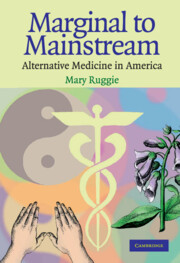Book contents
- Frontmatter
- Contents
- List of Tables
- List of Acronyms
- Preface
- 1 Introducing CAM … and the Many Questions It Raises
- 2 Understanding CAM: The Problem of Knowledge and the Power of Words
- 3 The Growth of CAM: Patterns of Use and Meaning
- 4 Physicians: Learning New Ways
- 5 Medical Research: Science and Interpretation
- 6 Investigating CAM: What Works?
- 7 The Road Ahead: Accommodation or Integration?
- Bibliography
- Index
6 - Investigating CAM: What Works?
Published online by Cambridge University Press: 05 June 2012
- Frontmatter
- Contents
- List of Tables
- List of Acronyms
- Preface
- 1 Introducing CAM … and the Many Questions It Raises
- 2 Understanding CAM: The Problem of Knowledge and the Power of Words
- 3 The Growth of CAM: Patterns of Use and Meaning
- 4 Physicians: Learning New Ways
- 5 Medical Research: Science and Interpretation
- 6 Investigating CAM: What Works?
- 7 The Road Ahead: Accommodation or Integration?
- Bibliography
- Index
Summary
The NIH has become the most important source of funding for research on CAM, and the key to its legitimacy, both scientific and political. Although several divisions at the NIH fund CAM research, the most important is the NCCAM. It now undertakes a wide range of activities, including funding for both extramural and intramural research, research training, the development of scientific databases, and public information; it works with educators and researchers in the United States and worldwide. The portfolio of projects funded is broad and both short- and long-term, ranging from exploratory investigations to large multicenter clinical trials. These activities and others grew slowly at first, reflecting a limited budget. But once the transformation from an office to a center was underway in 1997, a change directed by Congress, the growth curve spiraled. From an initial budget of $2 million in 1992, the NCCAM administered $89.1 million in FY 2000, the largest increase that year of any NIH center or institute. In FY 2002, the budget was $104.6 million. The director of the NCCAM testifies before both the Senate and the House Committees on Appropriations at least once per year, and thus far, Congress is responding favorably to developments at the center.
This chapter focuses on the kind of research that the NCCAM funds and that is at the core of its growing reputation. A large portion of these funds is allocated to, currently, 16 CAM research centers located at universities and medical or other specialized centers across the U.S.
- Type
- Chapter
- Information
- Marginal to MainstreamAlternative Medicine in America, pp. 130 - 183Publisher: Cambridge University PressPrint publication year: 2004



